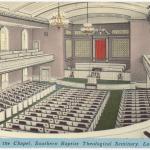This was a common response to my last post about not needing song leaders (“worship leaders,” lead singers, whatever you call them):
What do you do if you don’t have a choice?
Maybe you’re just starting out in your position, and the church has always had someone in front singing into a microphone. Or perhaps you’re just filling in.
Maybe the only accompanying instruments you have are guitar or piano.
Maybe the congregation simply refuses to sing without a voice at the front singing for them.
I’ve been there, too, and never by desire. As I said before, our culture is so used to the performance model of singing that congregants often can’t comprehend anything different. But we have to try. The congregation’s voice is primary, and placing a lead singer in front of a microphone inherently takes that away from them. So let’s talk about a few things you can do to train your congregation to use its collective voice.
Sing confidently with a clear, pure, and unaffected tone.
In other words, sing like your Jr. High choir director taught you. Using popular vocal stylings as many worship soloists do distort the melody. Remember, you’re not in a coffee shop or an auditorium or a recording studio. Forsake the whiny, high larynx tone that you hear from most commercial singers, “worship” or mainstream. Don’t sing so that people will want to listen. Sing so they are able to join you confidently. Be a good example.
Sing with rhythmic, melodic, and textual precision.
Your job is to give the congregation the musical information they need to follow. Intone follow the written rhythm, intone every note, and sing with diction.
For the love of all that is holy and good, don’t ad lib.
Riffing, improvising, and embellishing add no substance to the task at hand; but they do make it nearly impossible for a congregation to follow along.
Keep amplification to a minimum.
Amplification can be a huge barrier to good congregational singing. It’s much easier to join in with unamplifed singing than to try and find your place in a wall of sound blaring at you from all sides. If possible, eliminate the amplification, or at least have them step back from the microphone after bringing the congregation in, so that the congregation learns to take initiative and not simply defer to an overpowering soloist.
When possible, shut up.
Don’t talk unless giving necessary verbal instructions. You’re not the host. You’re not the cheerleader. You’re not supposed to be the center of attention. You don’t usher the people into God’s presence. You’re not the tour guide, leading the way to the Holy of Holies. Your role is to model with your vocal presence. All the words you need have already written. Allow the congregation to follow your musical example without your personality getting in the way. And again, when you feel like the congregation has caught on, allow yourself to step away from the mic, and join in with the primary voice.
Give Up the Damned Pop Worship Model
I make no apologies for my choice of words. Entertainment worship is killing us. It is parching God’s people of the rich liturgy they so desperately need. In fact, it’s taught them a lie about what worship is, and why we worship together in the first place.
The pop worship model uses songs written for performance, not for congregational singing. It put the spotlight on performers, and silences the voice of the people. And it has no use for the rich treasury of hymns, chants, and Psalms the church has built through the ages.
Of course, it’s not going anywhere overnight. These are just a few steps to help your own congregation begin to move forward. So look toward the future. Make it a point to teach the children in your church to sing. It took more than a generation to disassemble worship in the church. It will take at least that long to restore it.
The best time to start is now.



















